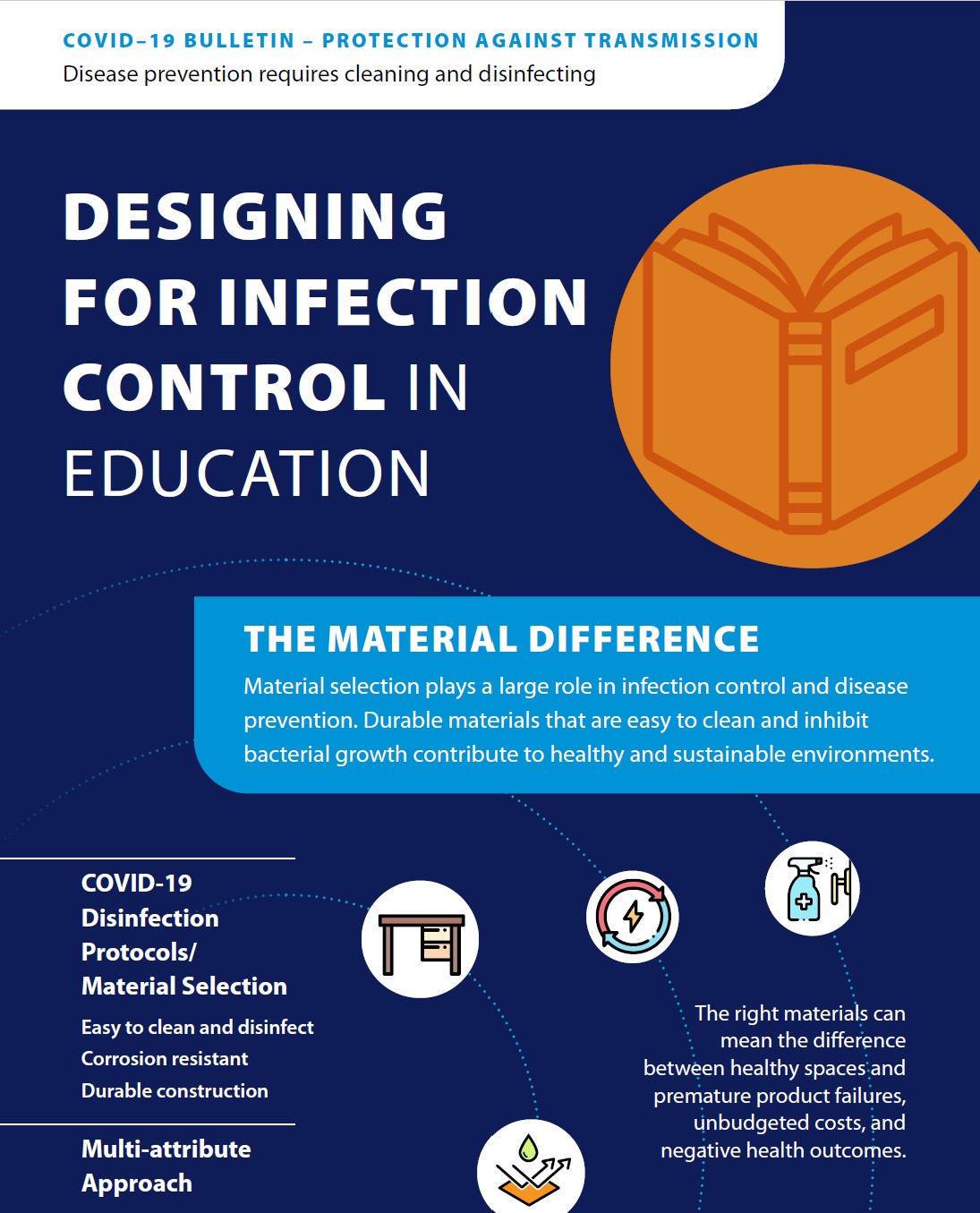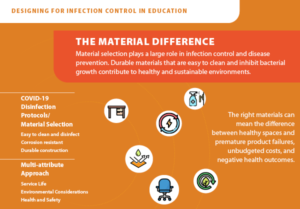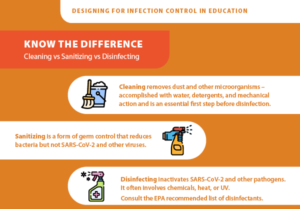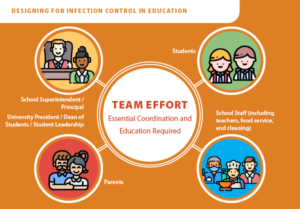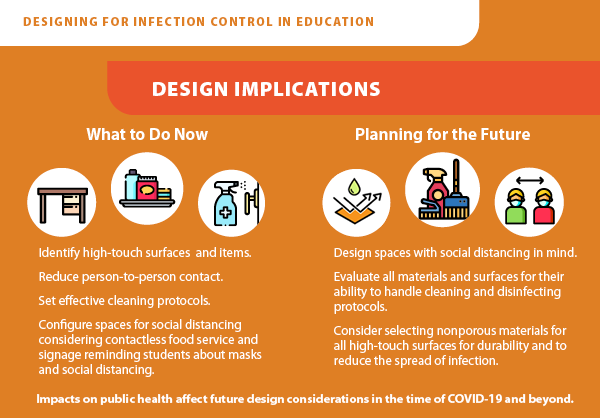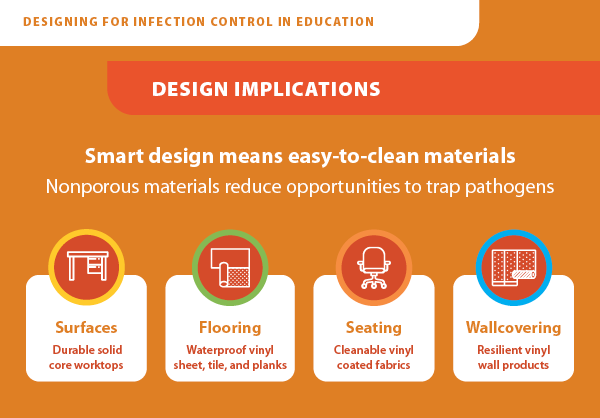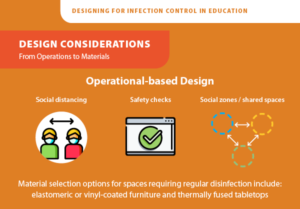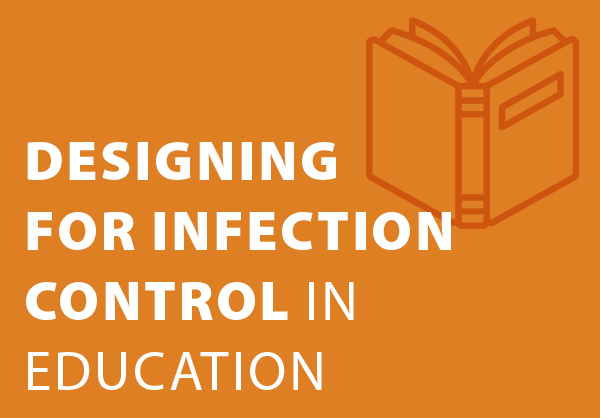
Designing for Infection Control in Education
School districts and universities are discovering what health care settings have long understood: that infection control adds a layer of complexity to cleaning protocols. Campuses pose the added challenge of operating as mini communities: shared living and dining spaces, retail stores, and athletic venues and recreational facilities. In the age of COVID-19, the U.S. Centers for Disease Control and Prevention (CDC) has essentially said that all public spaces must develop and implement a plan for cleaning and disinfecting. Here’s a primer on what this means—and the implications for design.
Click here for resources and social media graphics
you can download and share!
The Material Difference
Selecting the right materials can mean the difference between healthy spaces and premature product failures, unbudgeted costs, and negative health outcomes. That’s why applying a multi-attribute approach is critical—looking at performance characteristics, service life, environmental considerations, and health and safety. In other words: performance and sustainability go hand in hand.
With COVID-19 bringing new disinfection protocols to the educational sector, schools and universities must also consider how easy or hard a product is to clean and the impact of various disinfectants on that product. Durable materials that are easy to clean and inhibit bacterial growth contribute to healthy and sustainable environments.
Collaborate with manufacturers and trade associations to understand the performance characteristics, the chemistry, and the manufacturer’s cleaning and disinfecting recommendations. Doing your homework upfront will save you unintended consequences down the road.
Know the Difference: Cleaning vs Sanitizing vs Disinfecting
- Cleaning removes dust and other microorganisms. It is accomplished with water, detergents, and mechanical action and is an essential first step before disinfection.
- Sanitizing is a form of germ control that reduces bacteria but not COVID-19 and other viruses.
- Disinfecting inactivates COVID-19 and other pathogens. It often involves chemicals, heat, or UV.
To determine what disinfectant is best to use for your purposes, consult the U.S. Environmental Protection Agency (EPA) recommended list of disinfectants.
The Material Difference
These individuals are essential to coordinate with and educate in the education space.
For K-12
- School Superintendent / Principal
- School Staff (including teachers, food services, & cleaning)
- Parents
- Students
For university
- University President / Dean of Students / Student Leadership
- School staff (including faculty, food services, & cleaning)
- Students
Design Implications: What to Do Now
From contactless food service to signage reminding students about masks and social distancing, designing for COVID-19 means:
- Identifying high-touch surfaces and items.
- Reducing person-to-person contact.
- Setting effective cleaning protocols.
- Configure spaces for social distancing considering contactless food service and signage reminding students about masks and social distancing.
Design Implications: Planning for the Future
While our understanding of the novel Coronavirus and its impacts on public health and public spaces is evolving, there are steps that schools and universities can take today to apply a COVID-19 lens to future design. The impacts on public health affect future design considerations in the time of COVID-19 and beyond.
- Design spaces with social distancing in mind.
- Evaluate all materials and surfaces for their ability to handle your facility’s cleaning and disinfecting protocols.
- Consider selecting nonporous materials for all high-touch surfaces for durability and to reduce the spread of infection.
Three Examples of Smart Design
- Flooring: Remove hard-to-clean carpet and replace with resilient products like waterproof vinyl sheet, tile, and planks.
- Upholstery: Select solid surface countertops and desktops. For seating, opt for simple designs made from hard, preformed seating. Where movable seating is used, consider cleanable vinyl durable coated fabrics.
- Wallcovering: Select materials designed for cleanability, especially around high-touch areas (e.g., light switches, thermostats). For example, vinyl wall products are sturdy and can often be cleaned using more caustic cleaning products.
Design Considerations: From Operations to Materials
The way an industry operates will also influence how we design and maintain the spaces we occupy, and in turn, the materials we choose. There are three core operational considerations that schools and universities need to put in place—and that need to be factored into design:
- Social distancing to faculty, staff, and students can maintain six feet of space from one another.
- Safety procedures including temperature evaluation, access to masks and additional necessary PPE, and enhanced cleaning and disinfection protocol.
- Social zones / shared spaces and how to ensure occupant safety in shared community spaces such as classrooms, break rooms, dorm common areas, cafeterias, etc.
Each of these brings with it design implications as well as decisions about materials selection. For example, elastomeric or vinyl-coated furniture and thermally fused tabletops are a good option for desks where students are in shared spaces that need to be disinfected regularly and easily.
Review a more detailed flowchart describing design implications based on operational implications by clicking here.
Material Standards to Consider
There are many various guidelines and standards to consider. We’ve compiled a quick reference guide of some that you may want to review first. Click here to download.
Shareable Social Media Graphics
Download Resources (PDF)

